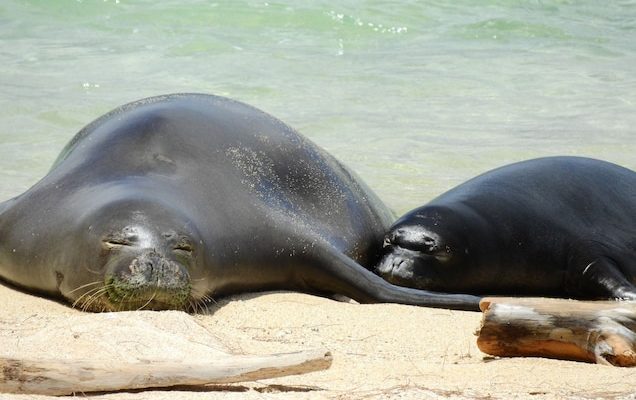Marine Mammal Parasite of the Month- Answer June 2021
The parasite for this month was Toxoplasma gondii, the toxoplasmosis disease-causing parasite. When marine mammals contract this disease, they can have many different symptoms such as anorexia, increased temperatures, swollen tonsils, and flipper lesions. In a study done by the United States Department of Agriculture, it was found that T. gondii caused mortality in sea otters, Pacific harbor seals, ringed seals, sea lions, bearded seals, spotted seals, Atlantic bottlenose dolphins, and walruses (Dubey et al., 2003). This study also reported antibodies for T. gondii, with which they assessed recovery and mortality rates. When found in sea otters, this parasite was most commonly found in the brain and heart. The life cycle for this parasite is that of an indirect life cycle, meaning that this parasite has intermediate hosts. First, the oocystes are shed while unsporulated from cat feces or other feces in the environment, and then take 1-5 days to sporulate and become infective. At this point intermediate hosts become infected from ingesting soil, water, or plant material that contains the oocysts. Intermediate hosts in the marine environment can include invertebrates such as clams, oysters, scallops and other filter feeders, and vertebrates such as fish. After ingestion, the oocysts transform into tachyzoites that typically stay in muscle tissues in an animal. Here they develop into tissue cyst bradyzoites, and when the final host eats whatever animal is infected with these bradyzoites, they also become infected. Treatment for humans can consist of a combination of drugs such as pyrimethamine and sulfadiazine, along with folic acid. For marine mammals, a variety of antimicrobials are used. This parasite is a good reason to stay at least 150 feet away from any marine mammal you come across since this parasite is zoonotic. This means that the disease from this parasite can be transferred between humans and animals. While both can be infected individually, one can transfer the disease to the other. Do your part and observe wildlife from a far distance!

Sources:
Centers for Disease Control and Prevention. (2018, September 5). CDC – Toxoplasmosis –
Treatment. Centers for Disease Control and Prevention. https://www.cdc.gov/parasites/toxoplasmosis/treatment.html.
Centers for Disease Control and Prevention. (2020, November 10). CDC – Toxoplasmosis –
Biology. Centers for Disease Control and Prevention. https://www.cdc.gov/parasites/toxoplasmosis/biology.html.
Dubey, J. P., Zarnke, R., Thomas, N. J., Wong, S. K., Bonn, W. V., Briggs, M., Davis, J. W.,
Ewing, R., Mense, M., Kwok, O. C. H., Romand, S., & Thulliez, P. (2003). Toxoplasma gondii, Neospora caninum, Sarcocystis neurona, and Sarcocystis canis-like infections in marine mammals. Veterinary Parasitology, 116(4), 275–296. https://doi.org/10.1016/s0304-4017(03)00263-2
NOAA Fisheries. (2018). Hawaiian monk seal RT10 with her third pup on the north shore of
Oahu in 2017. National Geographic. https://www.nationalgeographic.com/animals/article/seals-endangered-species-health-disease-oceans.
Yirka , B. (2018). Toxoplasma gondii. Phys Org.
Posted by Abby C.

